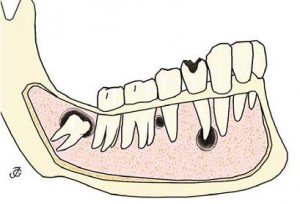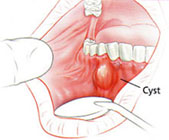Continued from Part 1
Glandular odontogenic cyst
The glandular odontogenic cyst is a rare, developmental odontogenic cyst. Most common site of occurrence is the front region of the lower jaw where they present as slow-growing, painless swellings. The cyst has a potentially aggressive, locally invasive nature and a tendency to recur. Continue reading


